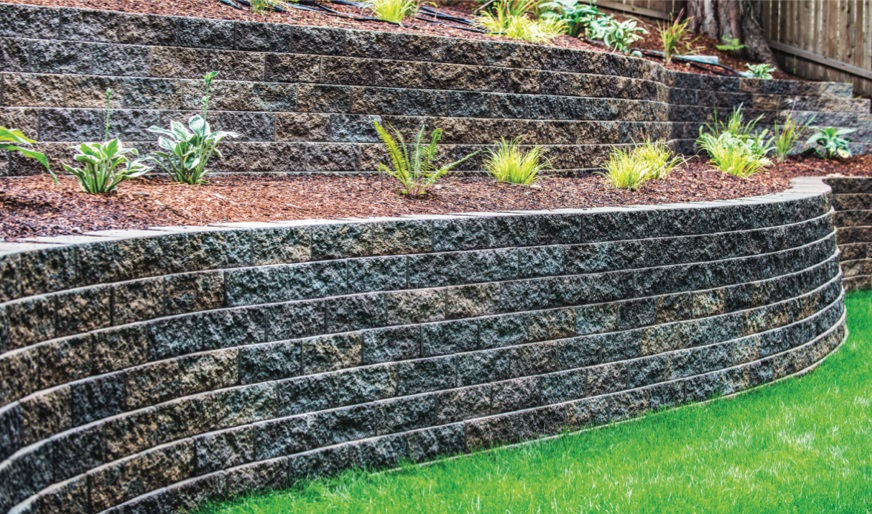
Retaining walls are more than just issue fixes; they do have an architectural character that lends dimension to the scenery, and they may be created from a variety of materials to suggest unique looks. Stacked logs or mortared rock, for example, might give a rustic appearance, but poured cement is sleek and futuristic. But please remember that there isn’t much room for mistakes when designing a form of retaining wall designed to support back tons of earth.
The holding wall’s durability is simply determined by the size difference from both parts of the wall and the wall thicknesses above the completed ground surface on the upper side. As a result, while designing such structures, these elements must be paid the highest priority because they will eventually determine the strength you demand.
How Long Should a Retaining Wall Last?
The effectiveness of your barrier and how long it will last—decades or maybe just a few more years—are mostly determined by factors you can’t notice, including a solid foundation deep in the earth and irrigation to avoid water from accumulating behind each wall. A well placed brickwork or concrete wall might last approximately to 40 years; there is no restriction to the life duration of a correctly installed wood wall.
Types of retaining wall materials:
In this section, we will look for some of the main widely used retaining wall materials and how they might best contribute to the aesthetic of the structure.
Wood:
Wood is a component that exudes a timeless and rustic vibe. The smoothness and pattern are aesthetically pleasant and popular, making it excellent for retaining walls where aesthetics are crucial. This is due to the fact that it originates from a once-living source, making it easier for it to blend in with trees and the ground. Because of its suppleness and reduced weight, wood is also simple to manage and carve into whichever form you choose for a wall.
The disadvantage of wood is it’s not as robust or strong as other materials. It simply can not carry on too much load and will ultimately decompose due to moisture and bugs. To preserve it in good shape over time, you must wash it with solvents and undertake periodic maintenance.
Masonry:
Rock, brickwork, or concrete blocks are robust and long-lasting when properly drained. These components are available in stone gardens and home depots, but installation will almost certainly require the services of a mason. Concrete block walls necessitate weep channels to alleviate soil weight and are supported by a rebar-reinforced masonry base situated below the winter line. A crushed-stone foundation is all that is required for mortar-free dry-stacked masonry retaining walls.
Brick:
Brick is a common material for retaining walls, but its constitution varies. Bricks can be made using clay, limestone, and gravel. Despite this, you may anticipate most bricks to have traits in common. With brickwork, you don’t have to worry about dampness, and it’s rather sturdy. However, unlike rock, mortar is required to keep bricks intact. Furthermore, swapping a damaged portion of a brickwork retaining wall is a difficult undertaking because the entire wall’s structure may be jeopardized.
Poured concrete:
Concrete, the highly durable material, may be stamped, dyed, veneered, or sculpted to seem like concrete block stone. Concrete can be purchased dry, in packages from a home store, or moist, supplied by a ready-mix engineer’s truck. Professionals should handle the layout, scaffolding, and filling. These structures, like concrete block masonry, are sustained by a strengthened concrete base and need weep holes. It’s the only sort of structure that isn’t pounded (leaned back) against the ground.
Plastic lumber:
Plastic timber combines a more classic appearance with long-lasting qualities. HDPE plastics are formed into panels that can have the exterior grain texture of real wood and come in a variety of colors. The substance is accessible in a variety of brown and gray colors, allowing it to blend in with a variety of organic environments.
Final thoughts:
In summary, as previously noted, there are a range of materials obtainable for domestic retaining walls. However, several considerations must be made while selecting on the retaining wall substance. First, you must choose the function of the wall, followed by the desired look, and lastly, your budget.
